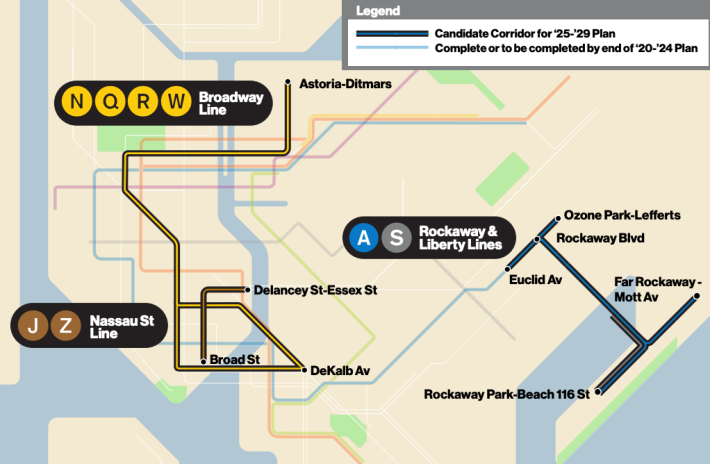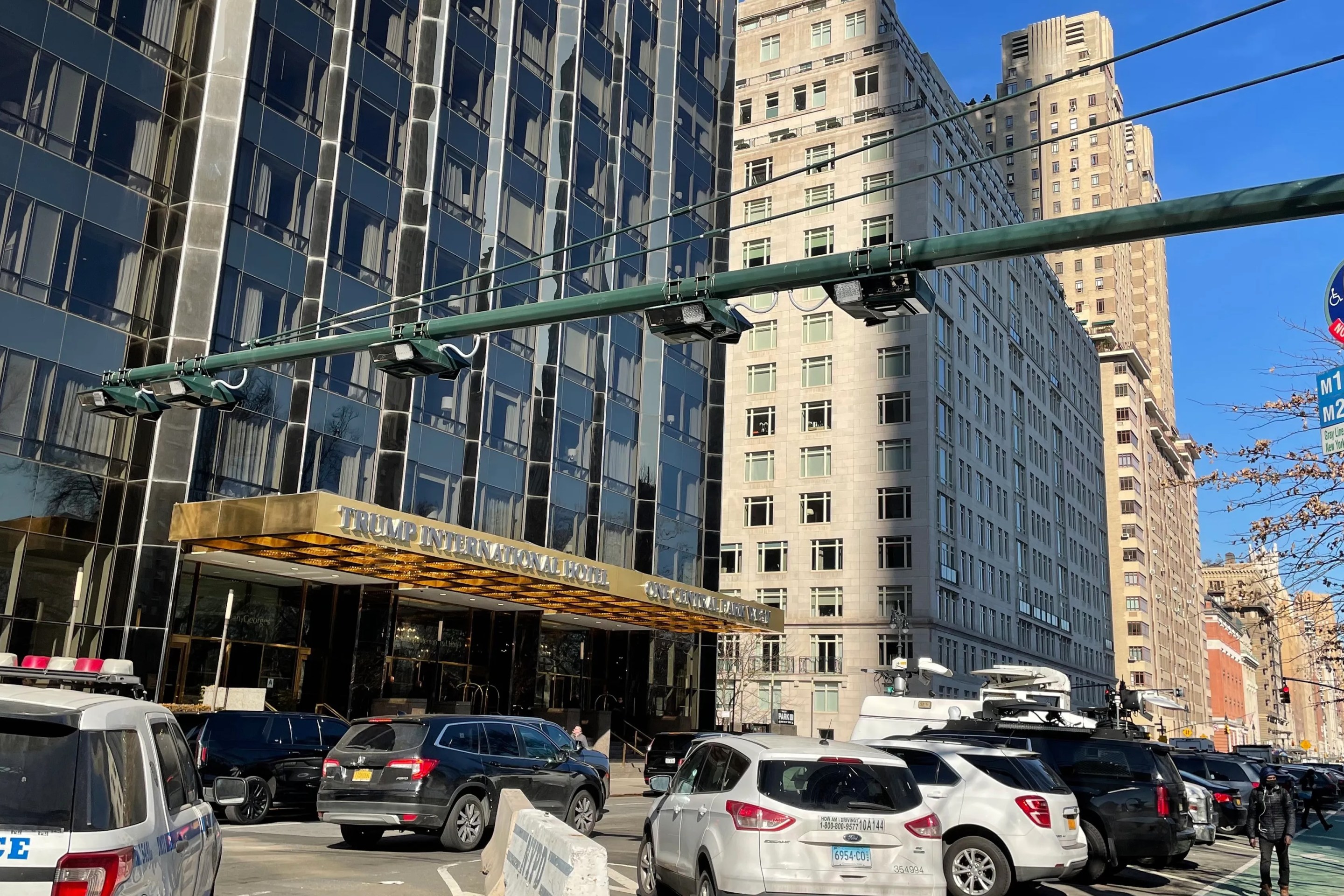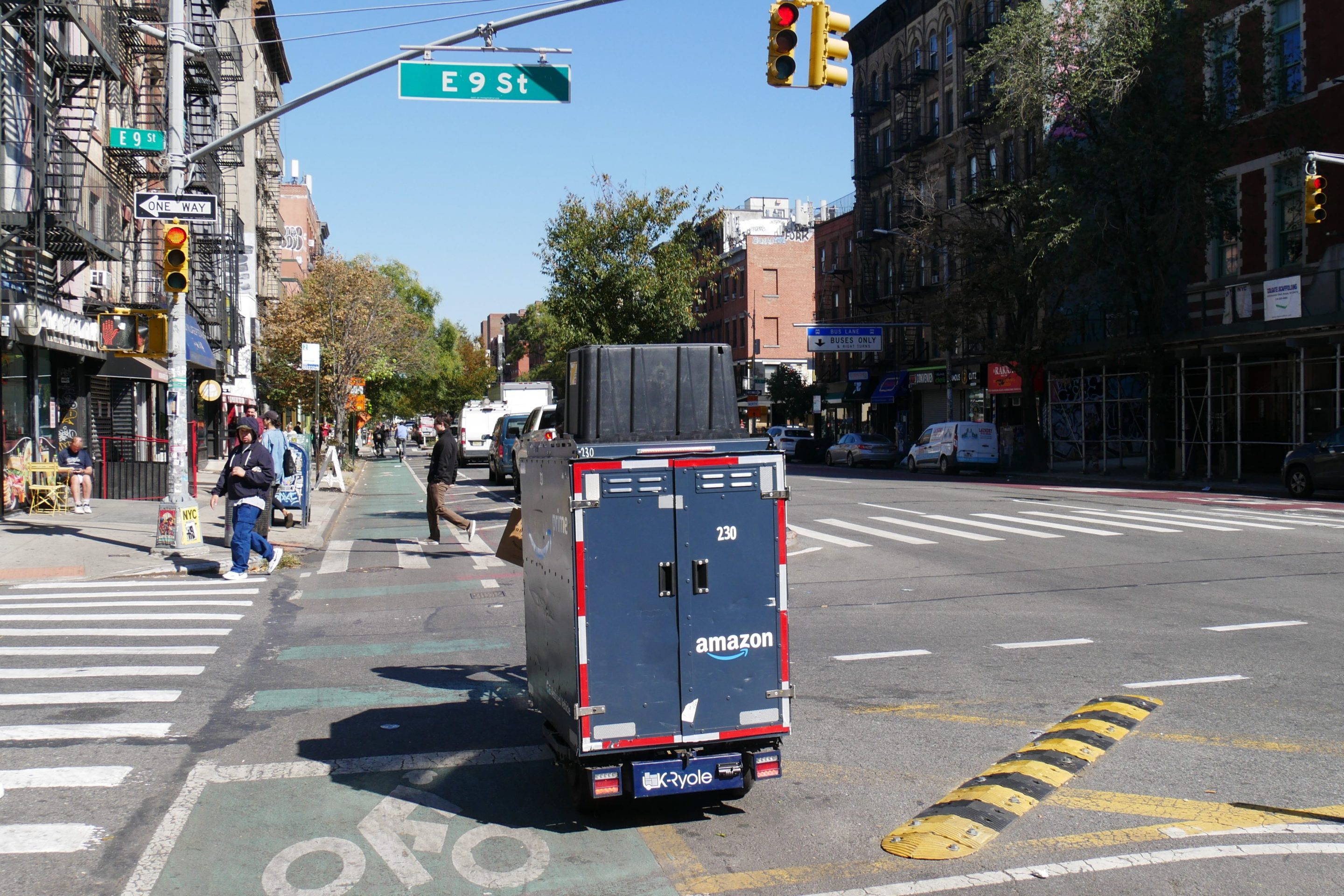Efficiency and cost control at the MTA? Sean Duffy is going to have a heart attack.
The MTA has cut the cost to upgrade its creaky subway signals in half — from $50 million per mile to install new signals on previous projects to $25 million per mile. The agency credits two big changes: One, the MTA is offloading more responsibility for project changes onto contractors and, two, the agency is no longer installing new signals on top of the old system and still paying to maintain the old signals.
Yes, the MTA used to do that.
"[In] our standard design-build contract, we found ways to share risk with the contractor," MTA Construction and Development President Jamie Torres-Springer told Streetsblog. "The second thing is we are installing the new signaling systems and removing the conventional signal system. So instead of having to rebuild and maintain these conventional signal systems, as we've done in the past, we're fully moving towards [advanced signals]."
The MTA's reliance on signals that have been out of date for decades has been one of the more conspicuous problems since the Summer of Hell in 2017 snapped everyone's attention to the underground infrastructure issues.
Since then, the MTA has emphasized its focus on upgrading subway signals from Depression-era fixed-block signals that provide imprecise train locations and require operators to manually switch signals to computerized communication-based train control, which automatically change signals to allow trains to proceed.
Between the 2020-2024 capital plan and the 2025-2029 capital plan, the MTA has committed to installing the advanced signals on 200 miles of tracks across the system.

The contract to upgrade signals on the G train was, in fact, the first signal upgrade contract the MTA ever gave out in a design-build fashion — in which the firm doing the work does most of the design of the project and the actual physical upgrades. That's new for the MTA, Torres-Springer said, but it's the standard outside of government contracting.
Before the MTA implemented design-build, the agency gave out its contracts using a method called design-bid-build. In that type of work, the MTA has to completely design a project and then select a contractor putting in the lowest bid — which led to situations where low-bid contractors would constantly come back to the MTA with change orders that drove up the total price of the work being done, Torres-Springer said. Design-build prevents that kind of cost inflation.
"When we use design-build, it means that we only do about one-third of the design work, and we put it out to bid," he said. "At that point, the contractor knows there will be things they find that are unknown, but they have to judge that risk and include that risk in their bid. There isn't going to be a change order. When our contractor on the G line finds something in the tunnel like a portion of track that needs to be replaced, or there's asbestos in some portion of the tunnel where they need to put up some signal cable they're responsible for that."
Outside experts are celebrating the MTA's decision to no longer keep the old signal system in place as a backup.
"The MTA was the only organization on Earth, reportedly, that when they did CBTC upgrades, they insisted on keeping the 1930s signals in place so that if the computers ever go down, you can run the 1930s system," said Alex Armlovich, a senior policy adviser at the Niskanen Center. "Keeping the 1930s signals defeats the entire purpose of doing the digital signals, it adds all this operational complexity and it was just hideously expensive and less reliable."
Armlovich compared the practice to trying to keep a second brain around.
"Imagine the MTA being diagnosed with brain cancer, and hearing that Europe and Asia have developed new brain transplants. And then then MTA brings their doctors over and tells them 'Yes, but for my brain transplant I also want to keep my old brain in place so that now I'll have two brains,'" he said.
Torres-Springer said the G train signal upgrade project was the first CBTC upgrade to completely remove the old signal system thanks to new communications technology like 5G radio signals and the capital construction team working with New York City Transit to really make sure the new signals were reliable enough.
As more and more new signals are installed across the subway, the MTA will be able to run more trains because the digital signals give more precise locations of where every train is. The increased reliability can also lead to changes in transportation across the whole city. Transportation economist Charles Komanoff said that dropping the cost of CBTC from $50 million per mile to $25 million per mile across the system is as good as a $21 congestion pricing toll for getting people out of cars and onto the subway.
The agency is supposed to upgrade 75 miles of subway signals in the 2025 to 2029 capital plan, on the N/Q/R/W, J/Z and A/C/E lines in Manhattan, Queens and Brooklyn. The MTA budgeted $5.4 billion for the work, but it expects to keep the baseline for actually installing the new signals at the new price of $25 million per mile, with the rest of the budget for other pieces like designing the projects and purchasing equipment to run the agency's current rolling stock on CBTC.
The new baseline is a win for the MTA, at a time when it has taken heavy fire from U.S. Transportation Secretary Sean Duffy over what he has repeatedly and inaccurately said is the current agency's wasteful spending habits. It's also good for the agency at a time when it has to do more with less, as even the $68-billion capital plan is 4-percent cheaper than the 2020-2024 capital plan when accounting for inflation.
"We're budgeting now fully based on an expectation that we're going to save money," said Torres-Springer. "The 2025-to-'29 plan is 4-percent cheaper than the '20-to-'24 plan, but we're getting a lot more out of it, and this is an example of that. It feeds directly into getting more for the money that we're putting into the system."






